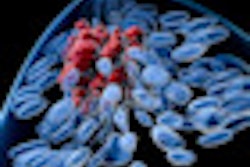
In this week's study in the Journal of the National Cancer Institute, a research team led by Dr. Philippe Autier claimed to find that mammography screening had no impact on mortality from breast cancer, based on their interpretation of data from a number of Swedish counties. However, Autier and colleagues made a number of fatal mistakes in their analysis.
When scientists have an opportunity to study the results of the "gold standard" -- i.e., the results of randomized controlled trials, which use individualized patient data -- then it is the preferred method rather than using aggregated data from registries. Registries do not have access to information about "detection mode" of the cancer cases (screen-detected/interval cancer/cancer among nonattendees/detected among women outside the trial, etc.). This brings in sufficient amount of biases that would make any conclusion unreliable.
Autier and colleagues' analysis is a very crude evaluation outside of experimental settings. Understandably, their conclusions differ very much from studies evaluating the impact of invitation to modern mammography screening in Sweden at the county level, studies that showed mortality reductions of 25% to 60% associated with the introduction of screening, both at the population level and in comparisons of women exposed and not exposed to screening.
One must calculate "incidence-based mortality" in order to assess the true impact of invitation to screening. That means that one makes a complete list of all breast cancer cases that occurred during the time period that one intends to study (in this case the screening epoch). Then, using the unique patient ID numbers, the exact date of diagnoses will be established in every individual case. This is to determine whether the diagnosis was made before or after the screening started.
Obviously, it is important to distinguish among all breast cancer deaths, which occurred after the initiation of a screening program, who were diagnosed before the screening program was launched. These deaths cannot be attributed to the failure of screening. These women have to be removed from the material -- i.e., only those cases that were both diagnosed and died from the disease during the screening epoch should be included.
This is an elementary requirement for an evaluation. Without access to individualized data, it is impossible to eliminate this source of bias. Despite the fact that this methodological flaw has been pointed out repeatedly in the literature, Autier and colleagues have used aggregated data without cleaning up their database from cases diagnosed before screening started.
How serious is this bias? During the first 10-year period in the screening epoch, more than 50% of cases of breast cancer death would have been diagnosed before the start of screening. This means that Autier's calculation has at least a 50% error.
And that is only the "invitation to screening" approach. If one is interested in the true impact of mammography screening among women who actually attended screening (which is the proper question), then one has to remove the cases of those who received their breast cancer diagnoses during the screening epoch, but never attended screening.
It is unfortunate that a manuscript with such flawed methodology was published, an outcome that naturally leads to speculation about the robustness of the peer-review process in this instance. The Italian authors of the editorial that accompanied Autier team's study (Segnan et al) are smart and knowledgeable people, and have described the flaws of this article perfectly. Hopefully, their editorial will receive the attention it deserves, since they so clearly express their impatience with research that neglects clear guidance in the published literature on how such an analysis should be done.
These errors point up an important issue: Researchers asserting that the majority of previous findings on an issue are wrong have a responsibility to check their facts and methodology very carefully. The scientific community is unlikely to be dissuaded from its consensus by a paper containing errors of fact.
Dr. László Tabár is the president of Mammography Education Inc. in Cave Creek, Arizona, U.S. He is also professor of Radiology at University of Uppsala School of Medicine in Sweden, and is medical director in the department of mammography at Falun Central Hospital in Sweden. He was also project leader for the Randomized Controlled Breast Cancer Screening Project in Kopparberg County, Sweden.
The comments and observations expressed herein do not necessarily reflect the opinions of AuntMinnieEurope.com, nor should they be construed as an endorsement or admonishment of any particular vendor, analyst, industry consultant, or consulting group.



















